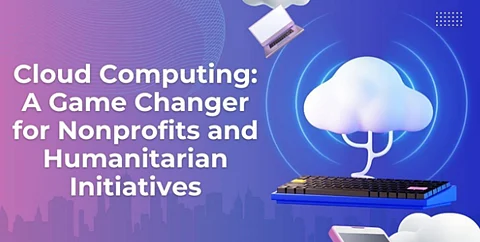

In a world of emerging technologies, a great giver of change has emerged in cloud computing for humanitarian and nonprofit operators across the globe. In her article in 2025, Sreelakshmi Somalraju examines how this technology has changed the way these organizations operated, thus making their aims more impactful and efficient than they could have possibly ever been before.
By offering scalable, cost-effective solutions, cloud computing enables nonprofits to optimize resources, enhance data-driven decision-making, and expand their reach, especially in resource-constrained environments.
Nonprofit organizations are often burdened with high operational costs, especially when it comes to managing IT infrastructure. Cloud computing has provided a way to alleviate these challenges. Migrating operations to cloud platforms has allowed many organizations to significantly reduce IT expenditures, often by up to 40%, by eliminating the need for costly on-premises infrastructure.
One of the cloud-based computing flagship services is the use of bootstrap data for enhanced decision-making. Nonprofits are now using more sophisticated analytics tools that has never been before. The change brought about has been particularly transformative, for example, for healthcare, education, and agriculture.
Consider Mercy Corps, for example. They've used cloud-based analytics to sort through information from more than a million smallholder farmers in several countries. Not only has this program increased crop yields by a whopping 32%, but it's also raised farmers' household incomes by 27%. It really illustrates how cloud-powered data insights can drive meaningful change and bring about tangible, measurable results.
In education, companies such as Khan Academy are using cloud technology to study the learning patterns of millions of students worldwide. Through this data, they've been able to optimize their content delivery, leading to an impressive 31% increase in concept mastery among learners.
Cloud technologies have indeed transformed the way we collaborate on a global scale by tearing down geographical and logistical barriers that were believed to be insurmountable. Humanitarian organizations, particularly, have gained from this technology by being able to coordinate their operations on the other side of the globe in real time. Such capability is completely vital when it comes to intervening in crises and emergencies that cut across different regions.
Médecins Sans Frontières (MSF) have used cloud platforms to enable improved communication between field teams in mass medical responses. This has helped them provide standardized care standards and resource management during complex emergencies, improving their operations.
Cloud computing has not only transformed how nonprofits collaborate and analyze data, but it has also revolutionized resource allocation. Through advanced optimization tools, organizations can now allocate resources—whether funds, volunteers, or materials—more effectively to maximize their impact.
For example, Habitat for Humanity has implemented cloud-based platforms to streamline resource planning for its construction projects. This has resulted in more accurate project scheduling and volunteer coordination, enabling the organization to complete more homes without increasing costs.Similarly, organizations like Water.org have used cloud technologies to improve the allocation of limited water resources in developing regions.
Perhaps the most important benefit of cloud computing is its ability to scale. Nonprofits can now create solutions that scale up to address global problems, from ensuring food security to educating and providing healthcare to those areas that need it most.
The World Food Programme has embraced cloud-based systems for maximizing supply chain management, cutting transportation costs significantly and enhancing delivery times. This ability is pivotal in ensuring effective delivery of aid to needy populations more efficiently, particularly in areas affected by conflict or natural disasters.
Within microfinance, companies have employed cloud platforms to minimize transaction fees and reach greater numbers of those in need. The scalability has been able to make financial inclusion more feasible, and micro-lenders can reach larger numbers of people while maintaining administrative expenses at low levels.
The incorporation of cloud computing has certainly revolutionized nonprofit operations by enabling organizations to upgrade their capabilities without proportionate increases in funding. As technology continues to change, the future of humanitarians will depend more and more on how well organizations can use digital tools to promote innovation and maximize their social impact.
In summary, cloud computing is not merely an innovation in technology; it is a change in paradigm in the way nonprofits are able to address some of the world's greatest challenges. Through adoption of cloud technologies, nonprofits are able to bypass barriers to operations, optimize resource mobilization, and enhance reach globally. As Sreelakshmi Somalraju's study indicates, the current digital revolution promises an era where nonprofits can expand their interventions, enhance their mission footprint, and eventually contribute more substantially to the greater good.
